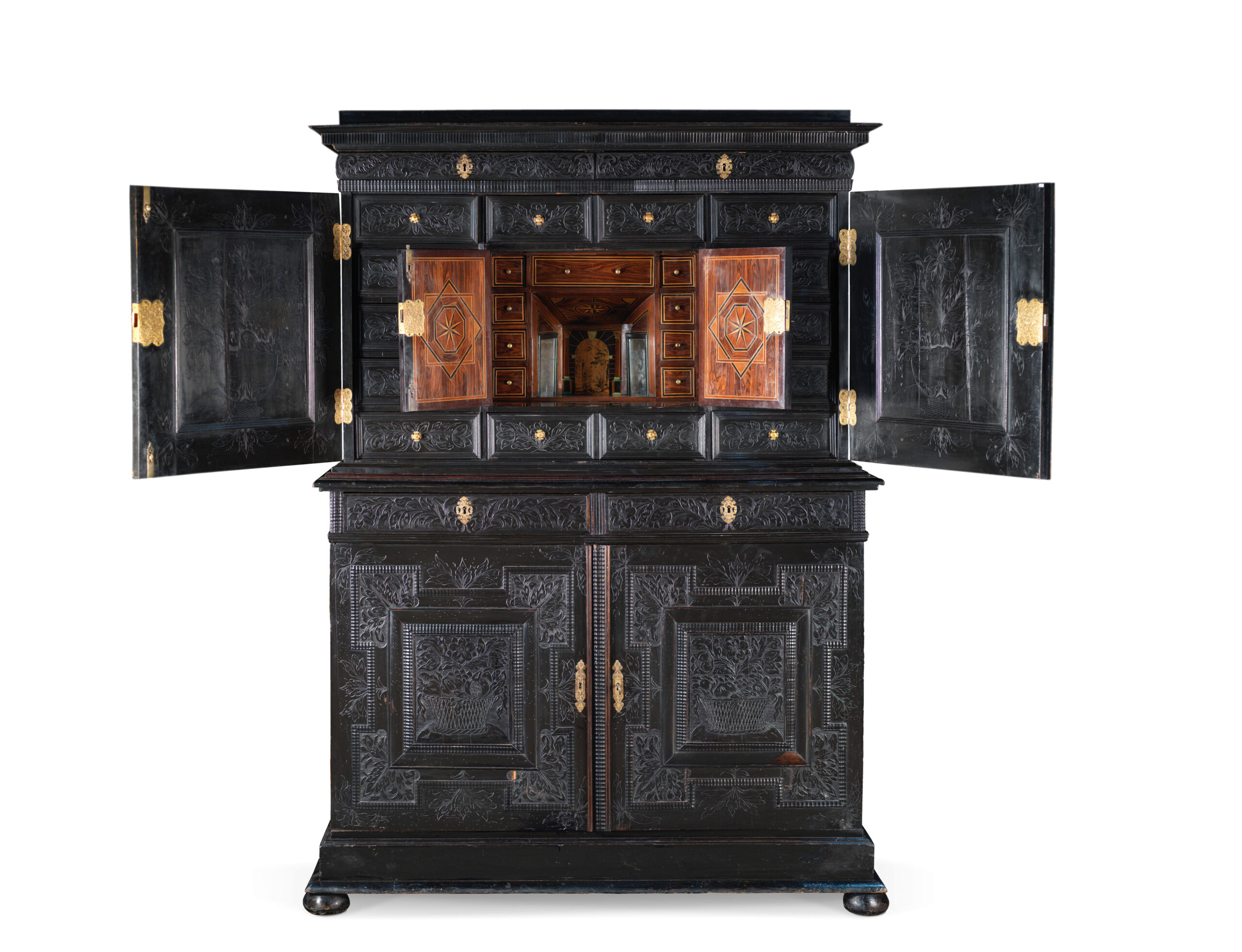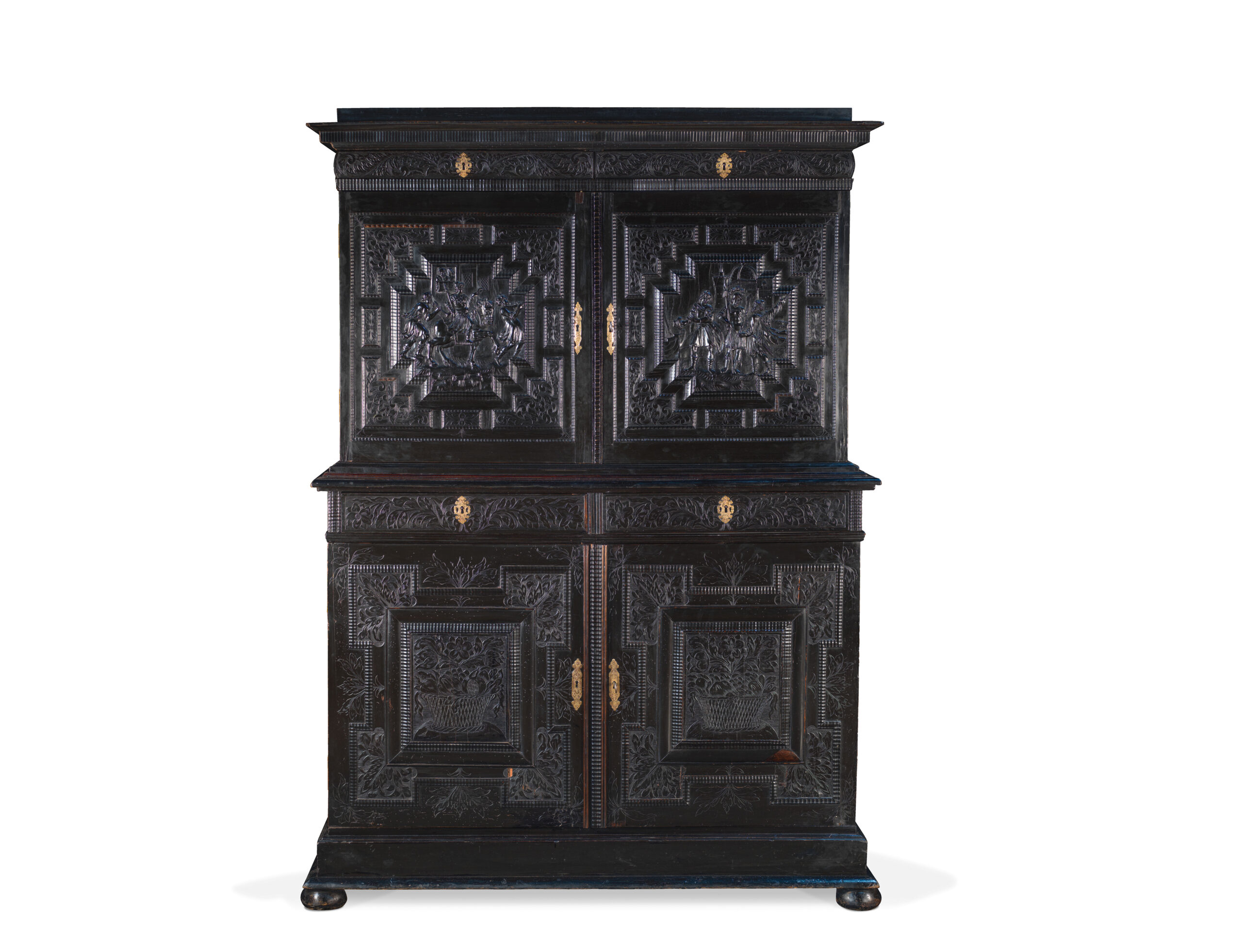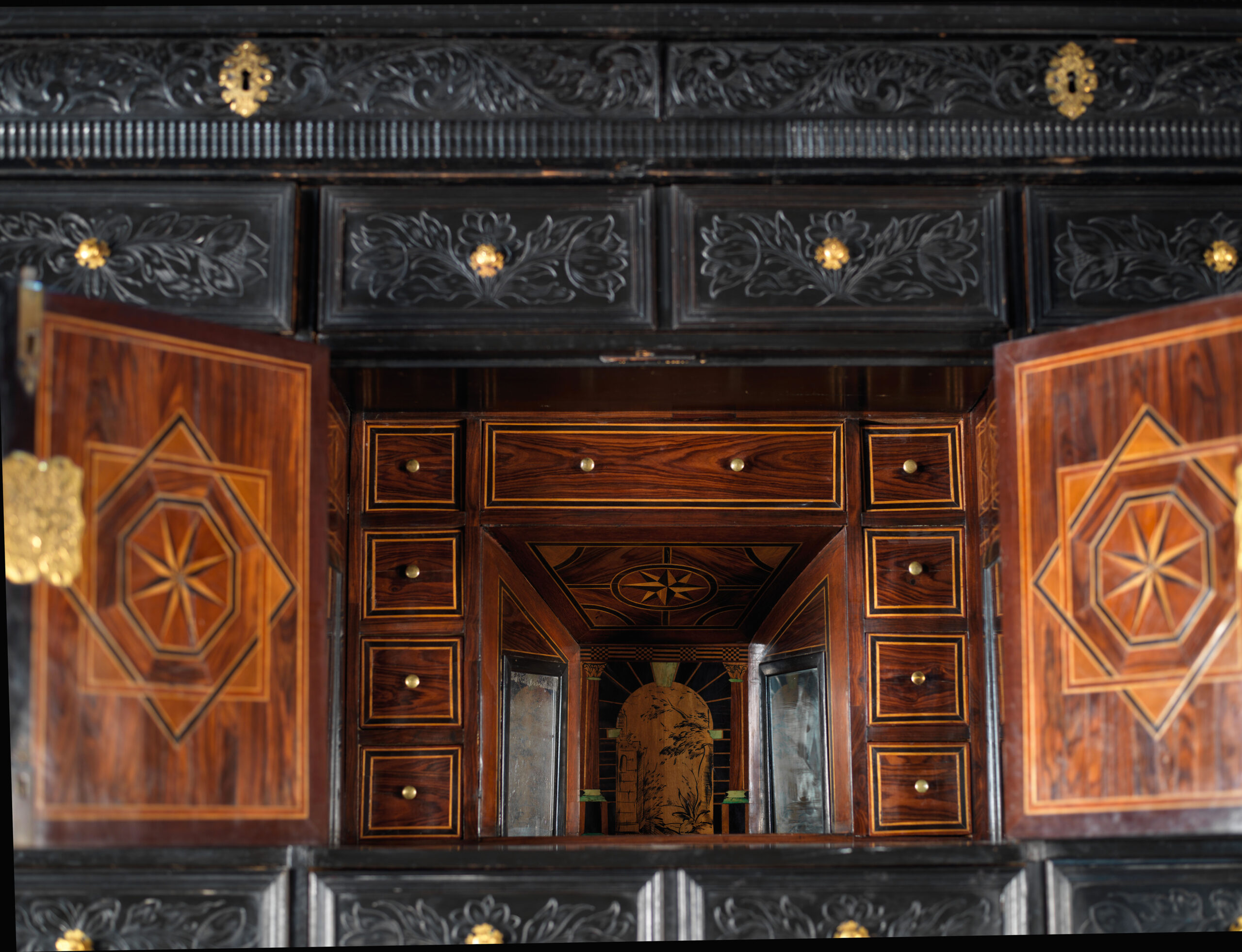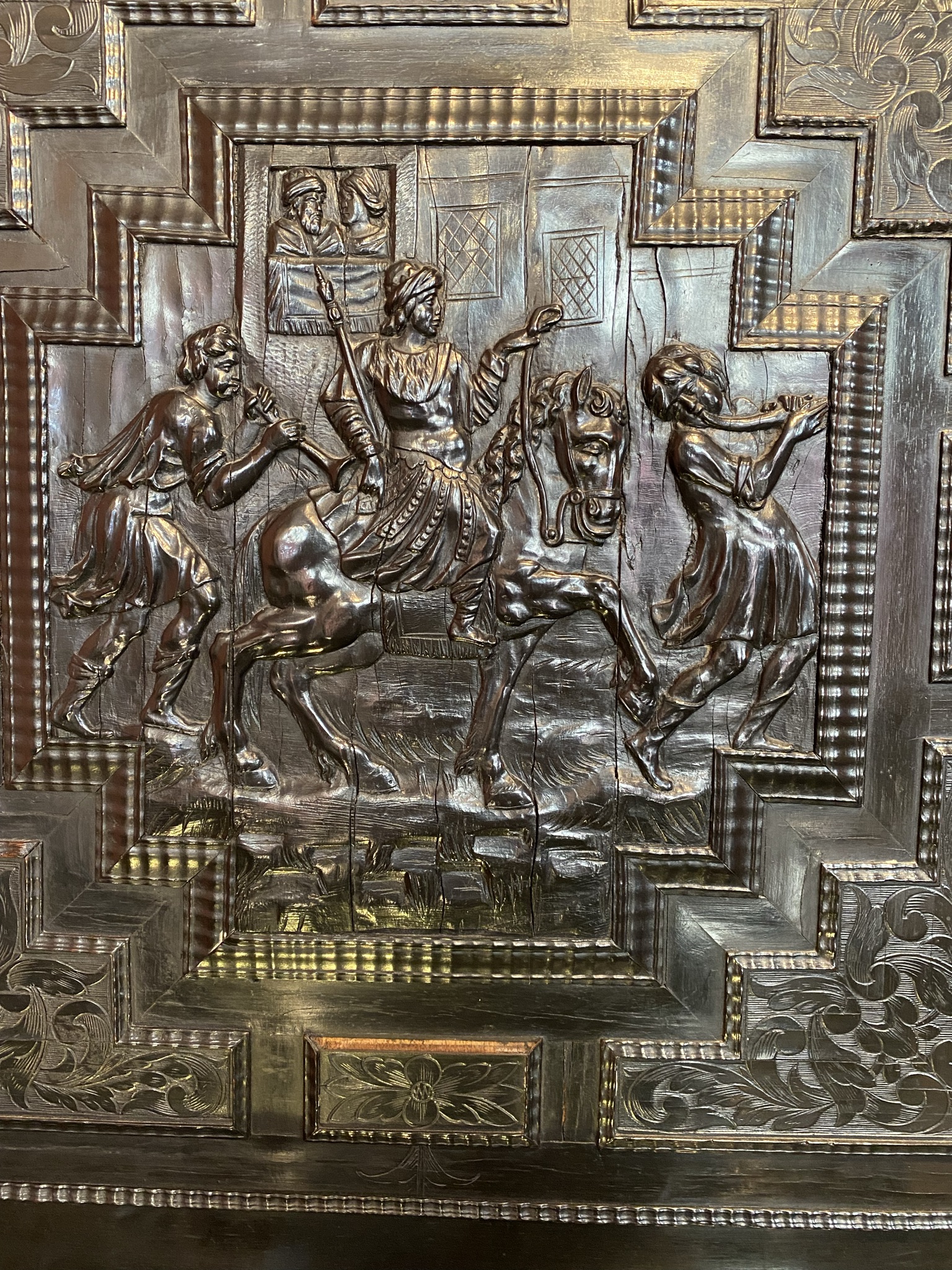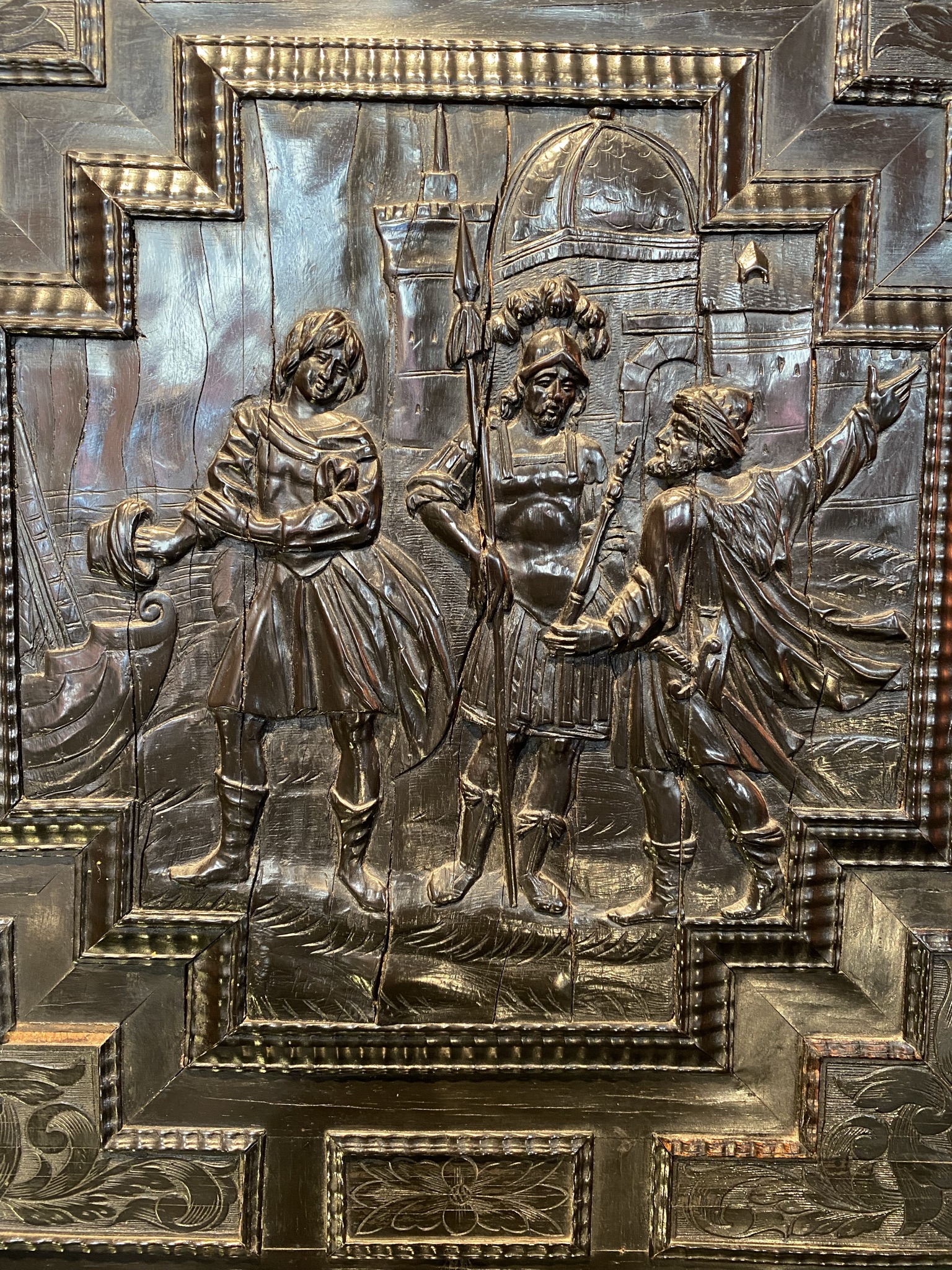Description
A real ceremonial piece of furniture, this two-part cabinet opens with two historiated panels and two drawers in the upper part and two leaves and two belt drawers in the lower part.
Richly worked, it offers both inside and outside a floral decoration, finely engraved which contrasts with the importance given to geometric lines. This duality, typical of this type of cabinet, confirms its dating and its origin.
In addition, the gilded metal locks and fittings enhance the sumptuous trait of this piece of furniture and also contribute to its ornamentation.
Furniture of predilection for “enclosing the most precious things” (Furetière, Dictionnaire, 1690) the appearance of cabinets in the 16th century accompanied the development of wunderkammern, these cabinets of curiosities enriched both by the vogue for the antique and by distant expeditions which bring back with them natural wonders and rare testimonies of distant civilisations. The curious, combining fortune and culture, brings together antique medals, rare plants, fossils, or oriental ornaments. This meeting of pieces which embodies much more than their material reality, a subjective evocation of all the riches of the earth and all the knowledge of men, acts in the eyes of its owner like a microcosm of which he is the master and which he enjoys according to his will.
This is how the first cabinets were designed to be transportable, often wooden structures calling for riches only those they housed for a collector who refused to part with them, even temporarily.
In the 17th century, the cabinet gained in technical complexity and luxurious materials until it could no longer be moved itself and became a prized and expensive collector’s item that was found to varying degrees in the homes of the as well as the prince.
Kept in the eponymous room of the apartment, intimate and reduced, the cabinet creates a mise en abyme among the rest of the collection which continues beyond the piece of furniture, lining the bedroom (Kammer). Indeed, in the 27 drawers of this cabinet was conserved a collection in the collection, perhaps archaeological fragments or shells from overseas, perhaps refined perfumes or precious jewels.
Cultivating the taste for merit and surprise specific to the curious, the manipulation of the cabinet obeyed three stages.
Closed, in the upper part, it offers two scenes in bas-relief carved in geometric medallions around which are inscribed geometric cartouches with a motif of finely engrave foliage scrolls.
On the lefts leaf is what could be a triumphal entry of a king into the city. A royal entrance is defined by the historian Pascal Lardellier as a major political rite consisting “for a city to officially welcome a sovereign or a high dignitary, in an architectural and theatrical setting prepared for the occasion”. We see a rider richly dressed in the Roman style carrying a sceptre, surrounded by two dancing musicians. In the background, we can see two men at a window watching the show.
The opposite medallion presents a scene that is more difficult to identify. We see a Roman soldier and two men talking. On the left, a boat taked shape which can make us say that the scene is held in a port. In the distance, the city emerges with its tower and its dome.
The character on the right, richly dressed, a sword at his waist, carries a sceptre in his left hand and points to the city with his right hand. The character on the left has in his right hand the same hat than the character described above. He seems to point to the ship. In the centre, the Roman soldier recognizable by his armor, his helmet and his spear listens to the first character. Maybe it is a commercial scene ?
Once the two leaves are open, 14 drawers are revealed framing two leaves engraved with a fruit basket from which a flower rises. The interior of the main leaves is also engraved and uses the same fruit and flower basket pattern with a few variations.
Finally, the last opening reveals a luminous space reproducing in wood marquetry, a theatre. This feigned structure, reminiscent in its polychromy of the churches of Tuscany, is framed by nine small drawers. In the upper part of the alcove, at the base of the opening as well as on the reverse of the two leaves, is a rose-des-vents in marquetry. To accentuate the effect of perspective, a checkerboard is created at the base of the alcove and leads the eye to a landscape painted on wood which is reflected in the two mirrors arranged on either side of the representation.
The cabinet surprises with its well-executed ornamentation which exploits historiated reliefs, plays of light and coloured marquetry, preserved in an exemplary manner.

